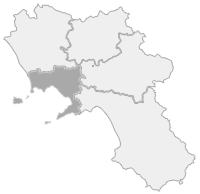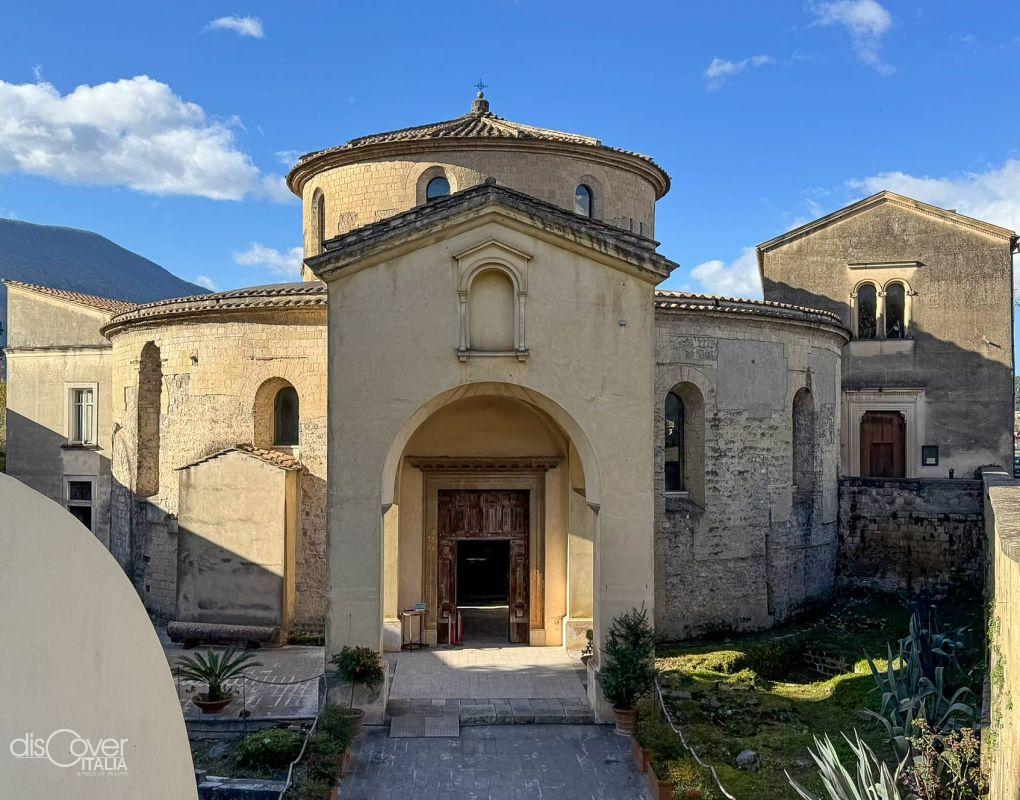It is the jewel that time has best preserved of the valuable historical-archaeological heritage of ancient Nuceria Alfaterna. It is one of the oldest and most important early Christian baptisteries in the world. Dedicated to Santa Maria Maggiore, but better known as “La Rotonda”, referring to the circular shape that distinguishes it and highlights it among all the other nearby structures that make up the monumental complex in the San Clemente area, in Nocera Superiore. Near the site where the pre-existing forum of Roman Nuceria stood. Nuceria was then one of the main cities of Campania and with a very ancient history, which began in the 7th century BC.
Nuceria, therefore, was already thirteen centuries old when, together with the entire Agro nocerino, it was the scene of the decisive page of the bloody Greco-Gothic war in 552. For two months, the imperial army led by General Narsete and the Ostrogoth army under the command of King Teia were camped in the Sele plain, separated by the Draconte river. The decisive clash, the famous battle of the Lattari Mountains, which took place in October, saw the Byzantine army prevail and marked the passage of the entire Peninsula under the control of the Eastern Roman Empire.
By now in the reign of Justinian I, Nuceria experienced a phase of reconstruction during which a new baptistery was built connected to a new cathedral, since the city became the seat of a bishop and remained so until the 9th century. Although no tangible evidence of that cathedral has yet been found, the magnificently preserved structure of the baptistery has allowed us to detect, beneath it and the current street level, remains of considerable value of a previous thermal building from the imperial era of the 2nd-3rd century AD. And in the construction, moreover, many spolia materials were used, coming from temples and structures of the Roman era.
With a circular plan, the sacred building of Nocera is made up of two main concentric rooms. The central one features a sequence of fifteen pairs of columns of precious marbles of African origin – in particular, cipollino green, Aleppo breccia and Numidian yellow – which originally belonged to the city’s theatre. Furthermore, those between the Corinthian capitals which are decorated with dolphins were part of the ancient temple of Neptune. The columns support a large dome 12 metres in diameter and 15 metres high, which represents a rare example of post-imperial architecture that has reached us, having resisted several earthquakes over the centuries.
All around the central body there is a ring-shaped ambulatory covered by a barrel vault, which is a fundamental element for the statics of the dome. With that second space, which is interrupted at the presbytery, the overall diameter of the building doubles, reaching 24 meters.
At the centre of the building is the baptismal font, octagonal on the outside and circular on the inside, which with its 7 meters in diameter is the second largest in Italy, after that of the Baptistery of San Giovanni in Laterano, the Cathedral of Rome. The Nocera basin is embellished with 16 marble slabs, which bear decorations with Christian symbols alternating with geometric motifs, anciently colored with stucco paste. Two white marble columns rise on the sides. They originally had to support a tiburium, an architectural element that encloses and covers a dome and which was widely used in Byzantine-era buildings. The large basin made it possible for catechumens to be baptized by immersion.
In a side chapel there are 14th-century frescoes, depicting scenes from the Gospel, which have been attributed to the Neapolitan Roberto d’Oderisio, a pupil of Giotto and one of the greatest exponents of Neapolitan painting of the 14th century. In another small chapel, a fresco of Christ Pantocrator is painted on the vault, while another painting offers a very rare scene of the bathing of the newborn Jesus.
The dedication of the baptistery and the entire religious complex of Nocera to the Madonna di Santa Maria Maggiore is justified by the depiction of the Madonna with Child in a polychrome stucco bas-relief from the first half of the 16th century, located to the left of the altar.
In the apse and in the ambulatory, archaeological excavations have revealed mosaics with late geometric and floral designs from Roman buildings from the 2nd and 3rd centuries AD under the current building.
The baptistery building also includes a room on two levels, which serves as an Antiquarium, which houses Roman finds found nearby or in other sites of the ancient city. The exhibition also includes an interesting collection of ancient prints and drawings.
The Rotonda was among the destinations of foreign travellers on the Grand Tour, including illustrious figures such asAndersen and King Gustav VI of Sweden and artists such as Théodore Duclère and Giacinto Gigante.
The Monumental Complex of Santa Maria Maggiore
Next to the baptistery, the Congregation of Santa Caterina di Alessandria of 1296 was built, with a trapezoidal shape, which today is located about 2 and a half meters below the road. The upper part was razed to the ground in the 17th century, on the occasion of the construction of a larger chapel that was dedicated to the martyrs and, among them, Santa Caterina di Alessandria was chosen as the patron saint of the Confraternity of Santa Maria Maggiore.
The baptistery forms a single complex with the 19th-century parish church, whose tall bell tower stands out against the sky, the church of the Congregation of Santa Caterina d'Alessandria, the garden behind the baptistery and the ruins of the hospital established for pilgrims in the Middle Ages.
Info: open for visits 9.00 – 12.00 Thursday, Friday, Saturday and Sunday





Comments powered by CComment